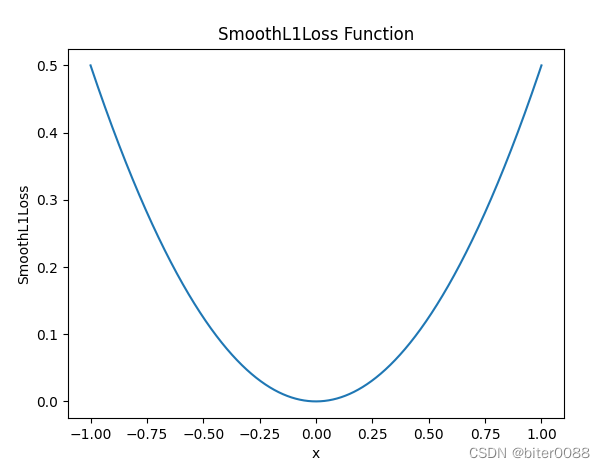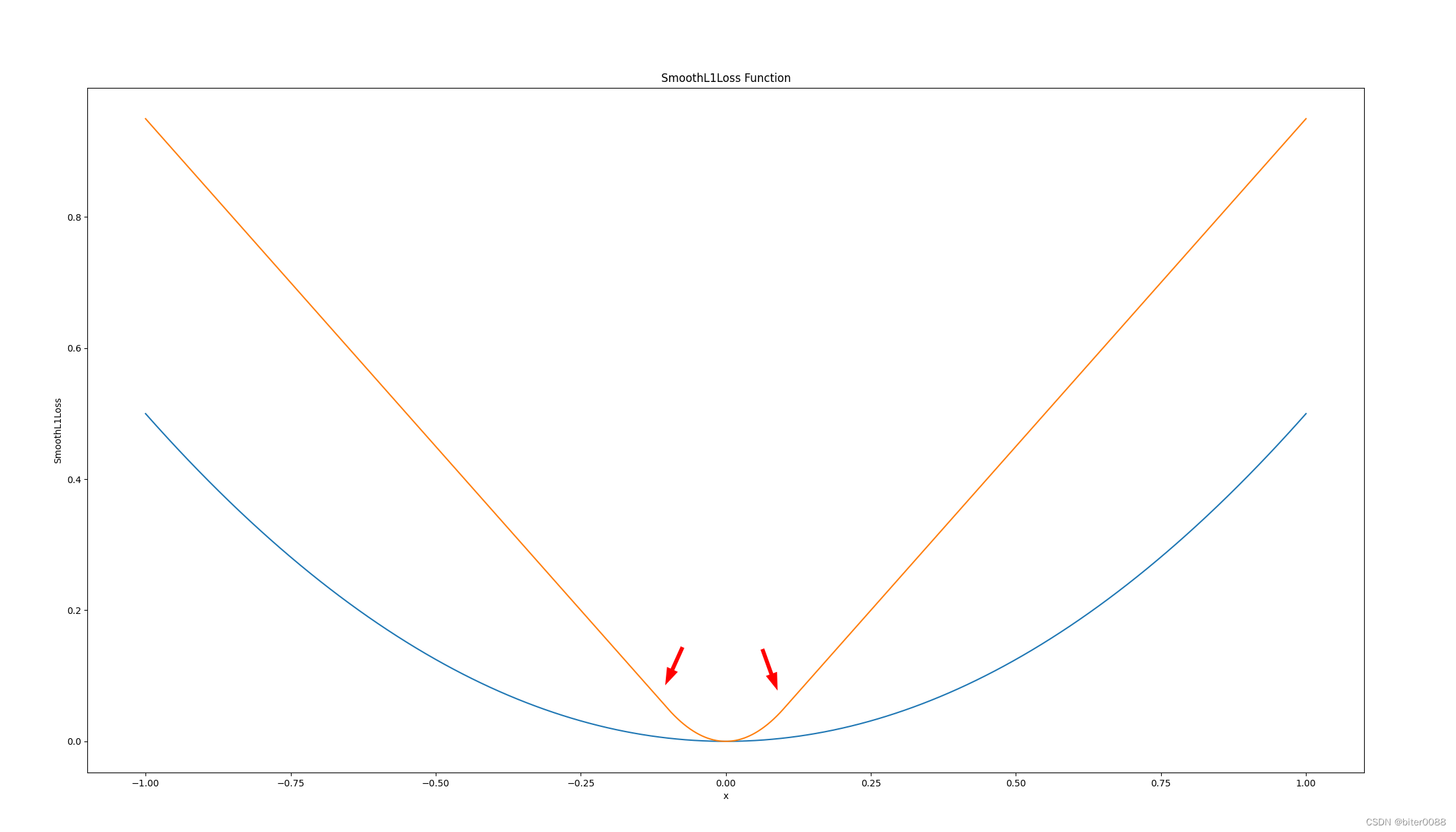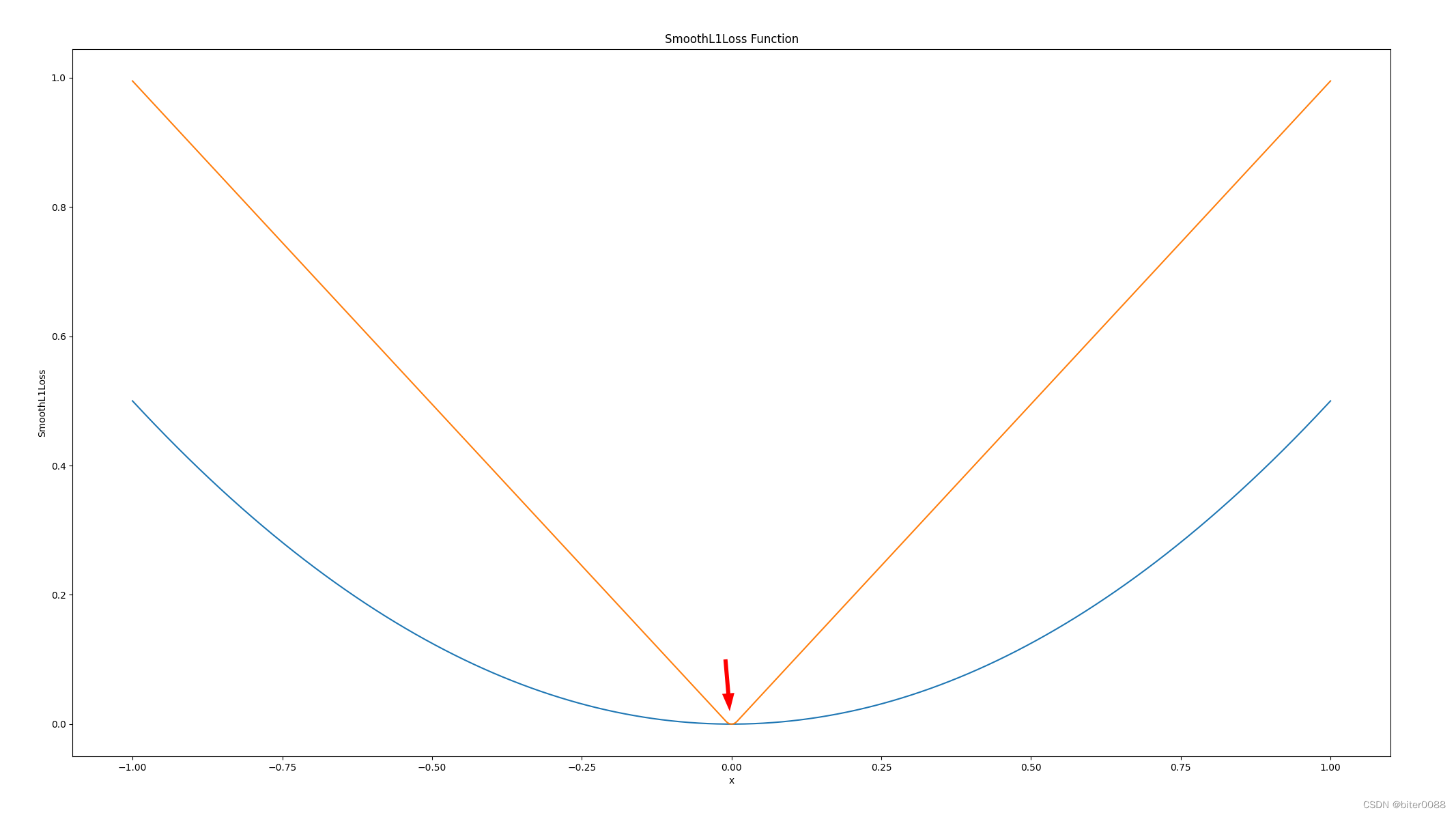0. 基本介绍
SmoothL1Loss是一种常用的损失函数,通常用于回归任务中,其相对于均方差(MSE)损失函数的优势在于对异常值(如过大或过小的离群点)的惩罚更小,从而使模型更加健壮。
SmoothL1Loss的公式为:
l
o
s
s
(
x
,
y
)
=
{
0.5
(
x
−
y
)
2
if
∣
x
−
y
∣
<
1
∣
x
−
y
∣
−
0.5
otherwise
loss(x,y) = \begin{cases} 0.5(x-y)^2 & \text{if } |x-y| < 1 \\ |x-y| - 0.5 & \text{otherwise} \end{cases}
loss(x,y)={0.5(x−y)2∣x−y∣−0.5if ∣x−y∣<1otherwise
其中,x和y分别为模型的输出和标签,|x-y|表示它们之间的差异。当|x-y|小于1时,采用平方误差;否则采用线性误差。这使得SmoothL1Loss相比于MSE更加鲁棒,即对于异常值的响应更加平缓。
在PyTorch中,可以使用nn.SmoothL1Loss()函数来构建SmoothL1Loss损失函数。
1. 绘制
SmoothL1Loss
函数
通过修改
torch.linspace
中的参数,可以改变图像的横坐标范围;通过修改
torch.zeros
中的参数,可以改变图像的高度和形状。
import torch.nn as nn
import matplotlib.pyplot as plt
import torch
# 定义函数和参数
smooth_l1_loss = nn.SmoothL1Loss(reduction='none')
x = torch.linspace(-1,1,10000)
y = smooth_l1_loss(torch.zeros(10000), x)# x2 = 1e3*x# y2 = 1e-3*smooth_l1_loss(torch.zeros(10000), x2)# 绘制图像
plt.plot(x, y)# plt.plot(x, y2)
plt.xlabel('x')
plt.ylabel('SmoothL1Loss')
plt.title('SmoothL1Loss Function')
plt.show()

2. 移动SmoothL1Loss公式的临界点
移动临界点是为了在不尽兴其他操作的情况下,放大模型的损失
移动到0.1
import torch.nn as nn
import matplotlib.pyplot as plt
import torch
# 定义函数和参数
smooth_l1_loss = nn.SmoothL1Loss(reduction='none')
x = torch.linspace(-1,1,10000)
y = smooth_l1_loss(torch.zeros(10000), x)
x2 =1e1*x
y2 =1e-1*smooth_l1_loss(torch.zeros(10000), x2)# 绘制图像
plt.plot(x, y)
plt.plot(x, y2)
plt.xlabel('x')
plt.ylabel('SmoothL1Loss')
plt.title('SmoothL1Loss Function')
plt.show()
如下,箭头处保持玩弯曲
移动到0.01
如下,箭头处还可以看到弯曲
import torch.nn as nn
import matplotlib.pyplot as plt
import torch
# 定义函数和参数
smooth_l1_loss = nn.SmoothL1Loss(reduction='none')
x = torch.linspace(-1,1,10000)
y = smooth_l1_loss(torch.zeros(10000), x)
x2 =1e2*x
y2 =1e-2*smooth_l1_loss(torch.zeros(10000), x2)# 绘制图像
plt.plot(x, y)
plt.plot(x, y2)
plt.xlabel('x')
plt.ylabel('SmoothL1Loss')
plt.title('SmoothL1Loss Function')
plt.show()

版权归原作者 biter0088 所有, 如有侵权,请联系我们删除。